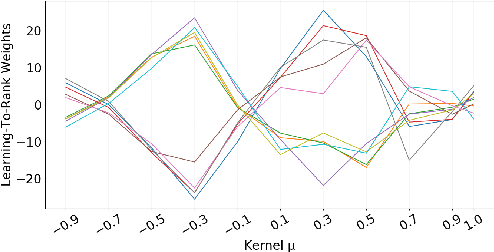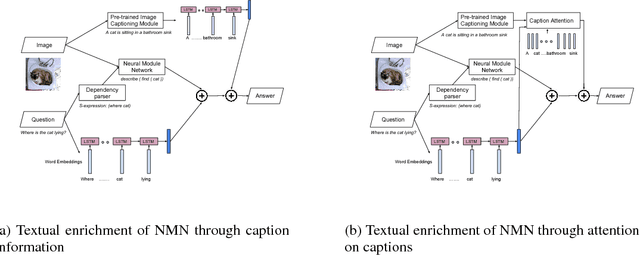Mary Arpita Pyreddy
Consistency and Variation in Kernel Neural Ranking Model
Sep 27, 2018



Abstract:This paper studies the consistency of the kernel-based neural ranking model K-NRM, a recent state-of-the-art neural IR model, which is important for reproducible research and deployment in the industry. We find that K-NRM has low variance on relevance-based metrics across experimental trials. In spite of this low variance in overall performance, different trials produce different document rankings for individual queries. The main source of variance in our experiments was found to be different latent matching patterns captured by K-NRM. In the IR-customized word embeddings learned by K-NRM, the query-document word pairs follow two different matching patterns that are equally effective, but align word pairs differently in the embedding space. The different latent matching patterns enable a simple yet effective approach to construct ensemble rankers, which improve K-NRM's effectiveness and generalization abilities.
* 4 pages, 4 figures, 2 tables
Textually Enriched Neural Module Networks for Visual Question Answering
Sep 23, 2018



Abstract:Problems at the intersection of language and vision, like visual question answering, have recently been gaining a lot of attention in the field of multi-modal machine learning as computer vision research moves beyond traditional recognition tasks. There has been recent success in visual question answering using deep neural network models which use the linguistic structure of the questions to dynamically instantiate network layouts. In the process of converting the question to a network layout, the question is simplified, which results in loss of information in the model. In this paper, we enrich the image information with textual data using image captions and external knowledge bases to generate more coherent answers. We achieve 57.1% overall accuracy on the test-dev open-ended questions from the visual question answering (VQA 1.0) real image dataset.
 Add to Chrome
Add to Chrome Add to Firefox
Add to Firefox Add to Edge
Add to Edge